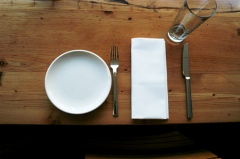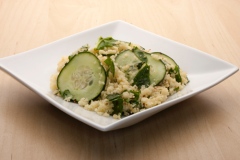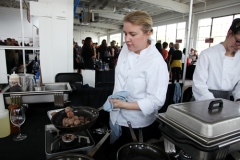Find my published version of this article in the Vanguard here
When the trailer came out for the recently released comedy “Bridesmaids,”  supporters of female comedians everywhere held their collective breath. Could this be the film rebuttal to the exhausting “woman aren’t funny” argument?
supporters of female comedians everywhere held their collective breath. Could this be the film rebuttal to the exhausting “woman aren’t funny” argument?
After its $24 million opening weekend, crowded theaters filled with both men and women’s roaring laughter, I’d like to say yes, I think it has done just that. Director Paul Feig (“Freaks & Geeks”) and producer Judd Apatow are not the only ones to thank, though. There are many things going right in this film, and the best way to describe it is to say that comedy comes first, and the “rom” part of the equation is far down the list—after friendship, intelligence and wit.
Annie (Kristen Wiig) has lost her cake bakery in Milwaukee to the recession and can’t seem to catch a break. When her childhood friend (Maya Rudolph) asks her to be her maid of honor, her life spirals, and yet the comedic opportunity ascends.
Enter the dream-team of female comedians to help get the job done—the wedding party. First, there’s Helen (Rose Byrne), who is Wiig’s competition for maid- of- honor-and-best- friend, and the two have remarkable comedic chemistry. Starting with a fight for best speech at the bridal shower—ending in the two competitively speaking in Thai and then Spanish, both actresses are not afraid to jump into cringe-worthy situations (slightly reminiscent of “Meet The Parents”) head on, and it’s working.
Writers Annie Mumolo and Wiig haven’t stopped with the hilarious competition between these two women—they’ve also developed Megan (Melissa McCarthy) who steals the entire film with her satisfying line between raunch and poignancy.
The rest of the wedding party, played by Wendi McLendon (“Reno 911”) and Ellie Kemper (“The Office”), act as small breaks in the comedic story line for even more jokes, keeping the stream of comedy flowing—namely the scene in which the wedding party travels to Vegas by plane. The pessimistic light McLendon shines on parenting mixed with the Disney fascination from Kemper is smart and entertaining.
Yet, the film isn’t just a vehicle for laughs—there is something that hits close to home for many audiences in Annie’s question of her own path. In a moment where sometimes going out and getting the job you want isn’t as easy as it should be, we find ourselves relating with Annie, who is now stuck working at a cheap jewelry store, randomly (and hilariously) attempting to talk customers out of being too optimistic.
The men in the film should not go unmentioned—John Hamm, as Wiig’s “friend with benefits” Ted, plays a role that is truthful, malicious and hysterical.
Rhodes (Chris O’Dowd), Annie’s potential romantic partner, is likable and funny in a more realistic way than the male-model equivalents who typically show up in romantic comedies. It’s nice to see stereotypes being broken on both sides of the gender spectrum.
Yet the best thing about this film is that every time it starts to veer in the direction of the tired romantic comedy tropes, Mumolo and Wiig’s fantastically smart writing steers it back to comedy. In an early scene where Wiig and Rudolph have breakfast, a conversation that quickly turns to the subject of men is relieved by the two women making faces at each other with food in their teeth. Rudolph and Wiig’s time on “SNL” has given them the opportunity work off one another comedically, and many of the best scenes are the two together.
In another scene, Wiig bakes herself one lone cupcake and the score is headed toward sad-day sappiness, but her ginormous bite and facial expression allow you to know that the writers are in on the joke and the film is once again saved by comedy.
It can’t be promised that this film is the final answer and suddenly all doors for female comedians have opened wide, but it is definitely a turn in the right direction.
 singing the praises from my apartment that smells like lemon, garlic, butter and the sea—and I only have NY Times writer Melissa Clark to thank.
singing the praises from my apartment that smells like lemon, garlic, butter and the sea—and I only have NY Times writer Melissa Clark to thank.






